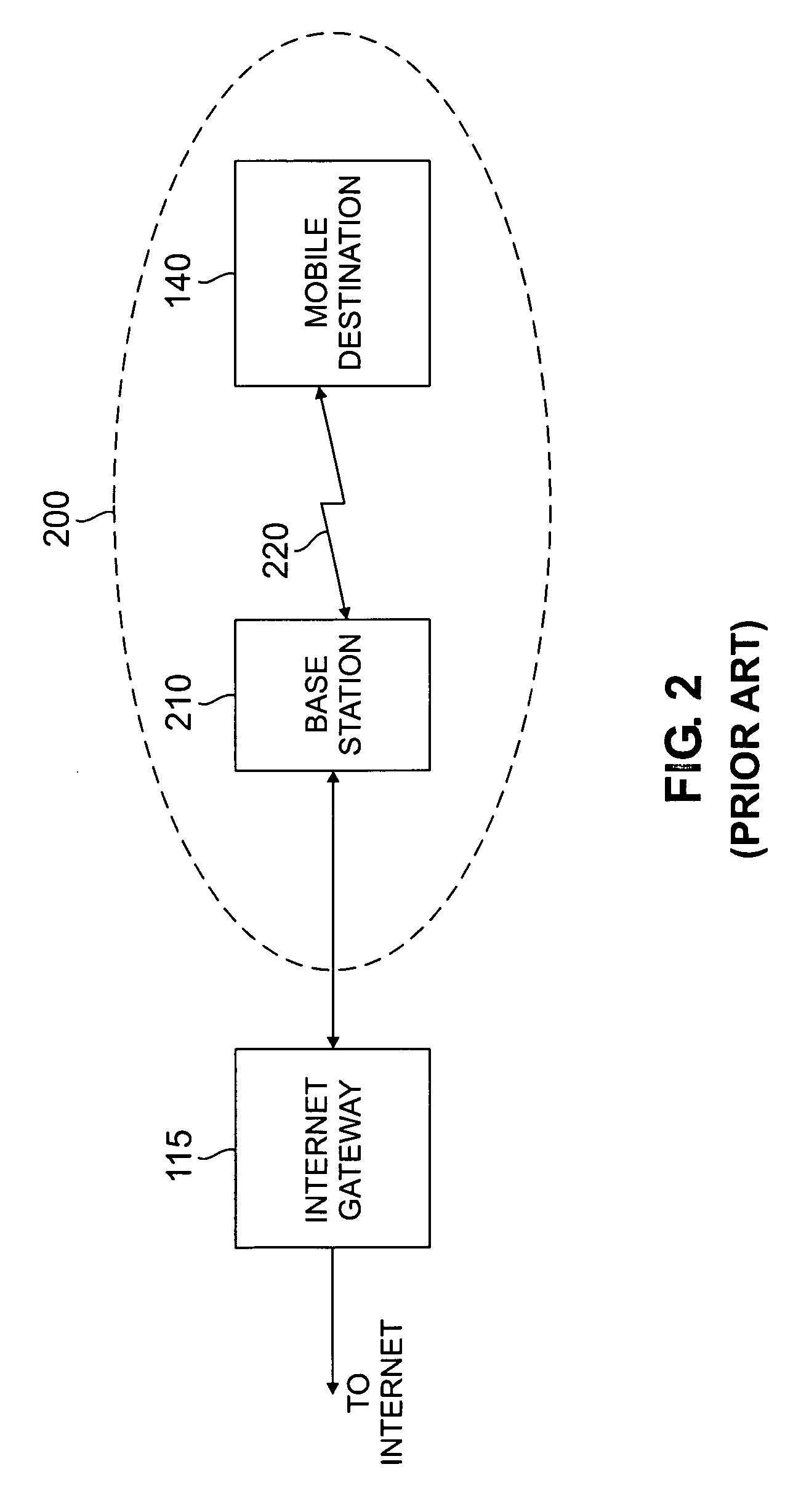Radio link protocol (RLP)/point-to-point protocol (PPP) design that passes corrupted data and error location information among layers in a wireless data transmission protocol
a wireless data transmission and radio link technology, applied in the field of wireless packet networks, can solve the problems of most streaming applications and real-time applications, packet losses can be random or bursty, and the wireless packet network encounters packet losses between a base station, so as to reduce or avoid unnecessary packet discarding, flexible and efficient packet delivery, the effect of improving performan
- Summary
- Abstract
- Description
- Claims
- Application Information
AI Technical Summary
Benefits of technology
Problems solved by technology
Method used
Image
Examples
Embodiment Construction
[0020]FIG. 1 illustrates a conventional heterogeneous network environment 100 that supports IP-Wireless data communications. Multimedia packets being sent from an originating server 105, through the Internet 110 and then over one or more wireless packet networks 200-n, shown in further detail in FIG. 2, to the mobile destination 140.
[0021]FIGS. 3A and 3B illustrate the protocol structures for the UMTS / CDMA 2000 standard and the (HDR) proposal respectively. For a more detailed discussion of the protocol structures for the UMTS / CDMA 2000 standard and the Qualcom HDR proposal, see E. Dahlman et al., “UMTS / IMT-2000 Based on Wide Band CDMA”, IEEE Communications Magazine, Vol. 36, No. 9, 70–80 (1998), ETSI UMTS YY.01, YY.02, CDMA2000:TIA / EIA / IS-2000 and P. Bender et al., “CDMA / HDR: A Bandwidth-Efficient High-Speed Wireless Data Services For Nomadic Users”, IEEE Communications Magazine, Vol. 38, No. 7: 70—77, July 2000, incorporated by reference herein. The RLP layer shown in FIGS. 3A and ...
PUM
 Login to View More
Login to View More Abstract
Description
Claims
Application Information
 Login to View More
Login to View More - R&D
- Intellectual Property
- Life Sciences
- Materials
- Tech Scout
- Unparalleled Data Quality
- Higher Quality Content
- 60% Fewer Hallucinations
Browse by: Latest US Patents, China's latest patents, Technical Efficacy Thesaurus, Application Domain, Technology Topic, Popular Technical Reports.
© 2025 PatSnap. All rights reserved.Legal|Privacy policy|Modern Slavery Act Transparency Statement|Sitemap|About US| Contact US: help@patsnap.com



